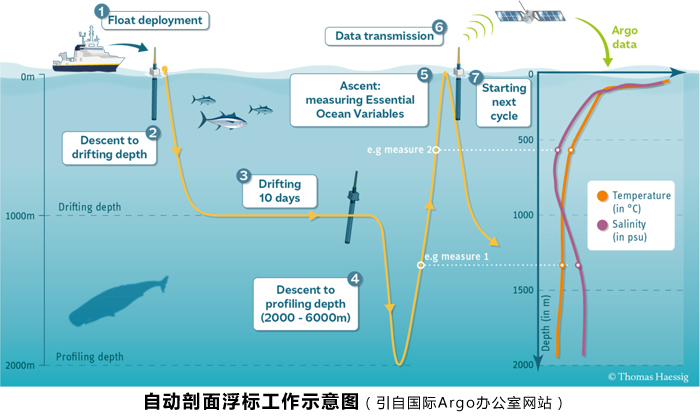In 2024, the company participated in the Oceanology Asia 2024 International Marine Science and Technology Equipment Exhibition (OA 2024) held at the Shanghai International Procurement Convention and Exhibition Center. This exhibition brings together more than 200 marine technology brands from around the world, showcasing the latest marine technology instruments and equipment, as well as technological innovations in various links of the industry chain, attracting the attention of many industry experts and exhibitors.
ARGO Global Ocean Observing Network
Since the first profiling buoy was deployed in the ocean in 1999, a total of about 18000 buoys have been deployed globally, obtaining over 2.8 million profiling images reflecting the physical and biogeochemical properties of seawater. These data cover key parameters such as temperature, salinity, dissolved oxygen, pH, and nitrate, providing unprecedented rich information for marine scientific research.
In contrast, since the British Challenger exploration ship launched global deep-sea exploration in the 1870s, the total number of temperature and salinity profiles collected by survey ships from various countries in the water depth range of 1000 to 2000 meters is only over 500000. This means that the amount of deep-sea data collected by profiling buoys over the past 20 years is almost five times the total of the previous 100 years. This achievement marks a revolutionary breakthrough in ocean observation technology and can be considered a miracle in the history of ocean surveys.
The progress speed of the Argo project is remarkable. In November 2012, Argo collected the one millionth profile data, which took approximately 13 years; And the second one million was achieved in just six years, in September 2018. Nowadays, the scale of Argo data far exceeds the sum of traditional ships and other observation equipment, providing scientists with more complete, clear, and three-dimensional images of ocean evolution.
Automatic profiling buoys are not limited by weather and sea conditions, and can monitor the vast majority of the world's oceans year-round, earning them the title of "silent sentinels". Its data is freely shared globally and widely used in fields such as marine aquaculture, pollution monitoring, marine education, and national defense. The climate assessment report of the Intergovernmental Panel on Climate Change (IPCC) also heavily relies on Argo data. According to statistics, scientific papers based on Argo data are published in authoritative international journals almost every day, fully demonstrating its core position in ocean and climate research.

